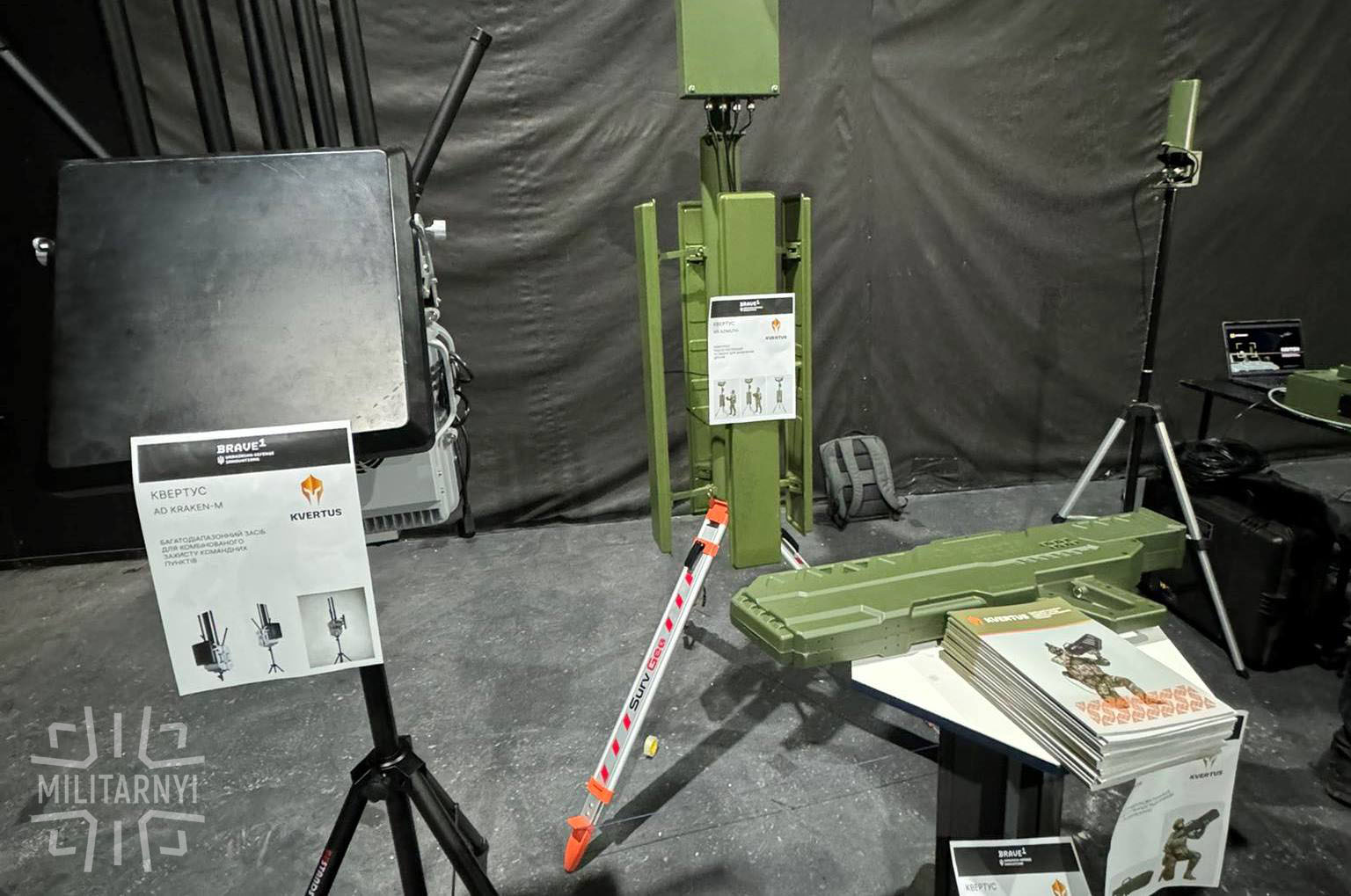In Ukraine, more than 50 manufacturers are working on the development of more than 100 electronic warfare (EW) and Signals Intelligence (SIGINT) systems.
Ukrainian companies receive active support from Brave1 (a cluster for the development of military technologies in Ukraine) in the codification of their products.
The development of EW and SIGINT systems is a response to the threats that arise on the dynamic frontlines.
“The system from a year ago won’t cut it today,” says Oleh Donets, Head of Cooperation and Partnership with the Security and Defense Forces of Brave1, EW/SIGINT direction leader.
Much attention is now paid to short-range EW systems that must counteract FPVs and drones that drop explosives while hovering over the military.
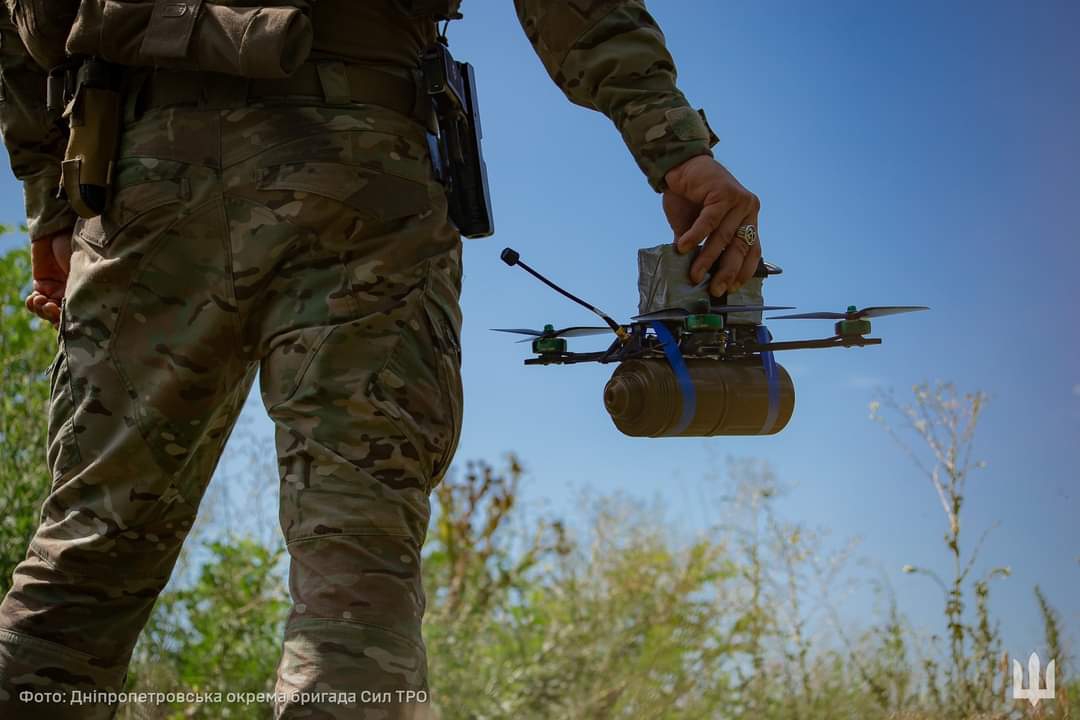
Recently, several Ukrainian companies have introduced various solutions in this field. Militarnyi correspondents had the opportunity to review them.
Kvertus
Kvertus offers the most EW and SIGINT systems on the Ukrainian market.
They have more than 22 unique EW systems in their catalog.
“A month ago, a SIGINT came into the series, which in its group is the fastest in the world,” the company’s representative told Militarnyi.
Currently, the system is undergoing all the necessary tests at the Ukrainian Ministry of Defense and on the front line.
“We collect feedback from soldiers to improve and make the product adapt to the war,” the company said about its new development.
Recently, the company has developed a KRAKEN-M multi-band system, which is designed for combined protection of command posts.
The system protects military, civil and critical infrastructure facilities.
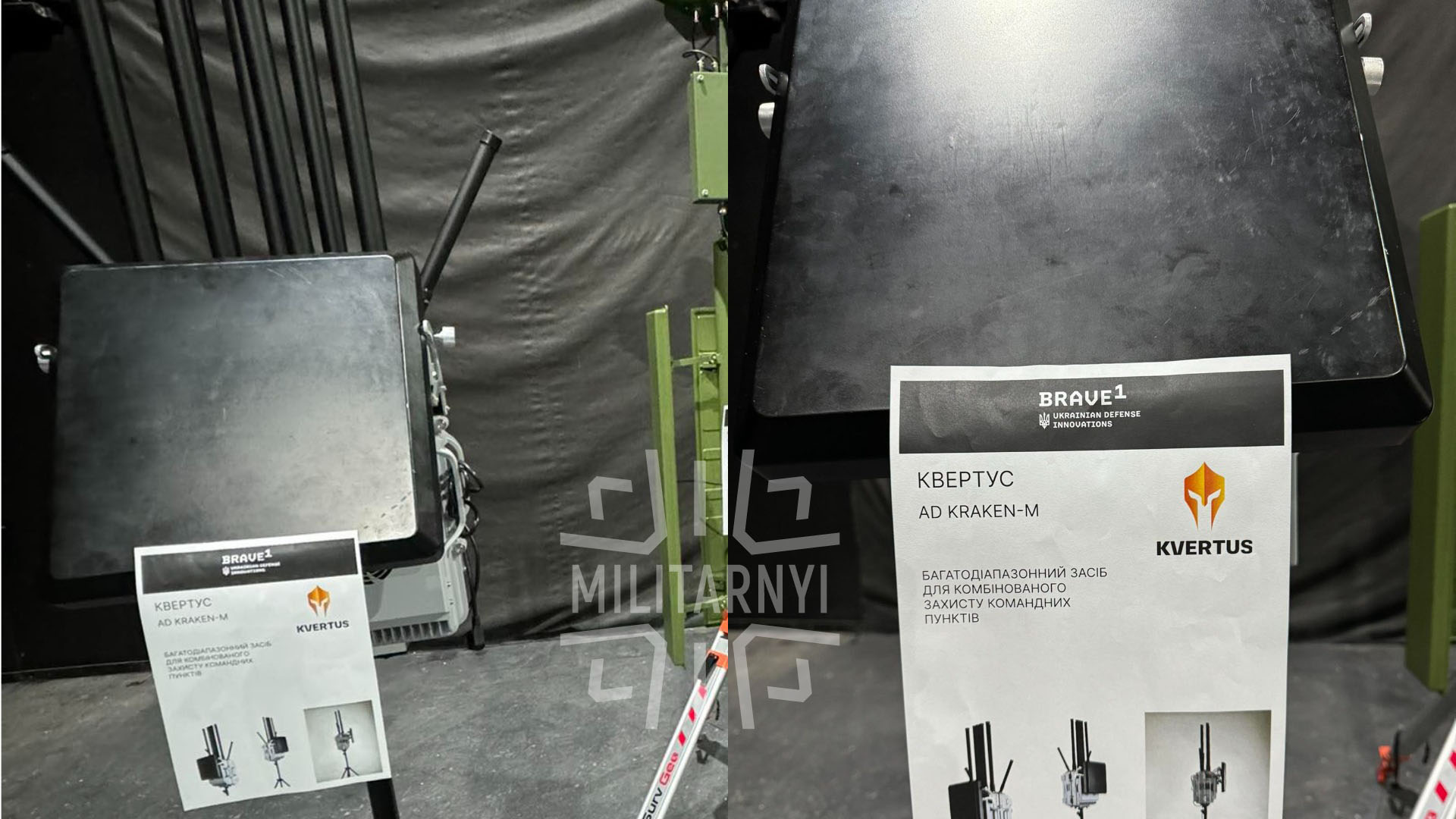
“It has a directional antenna that operates up to two kilometers, and a dome that operates starting from one kilometer,” the developers said.
The frequencies can be turned on and off to make corridors for the flight of Ukrainian drones.
“On the front line, the defeat of friendly drones is approximately 50%. [Because] Everyone turns on EW systems,” Kvertus says.
Due to the company’s developments, soldiers can now make corridors for flight paths at certain frequencies.
Kvertus also released three EW backpacks at different frequencies to counter FPV drones. They help combat drones that drop explosives.
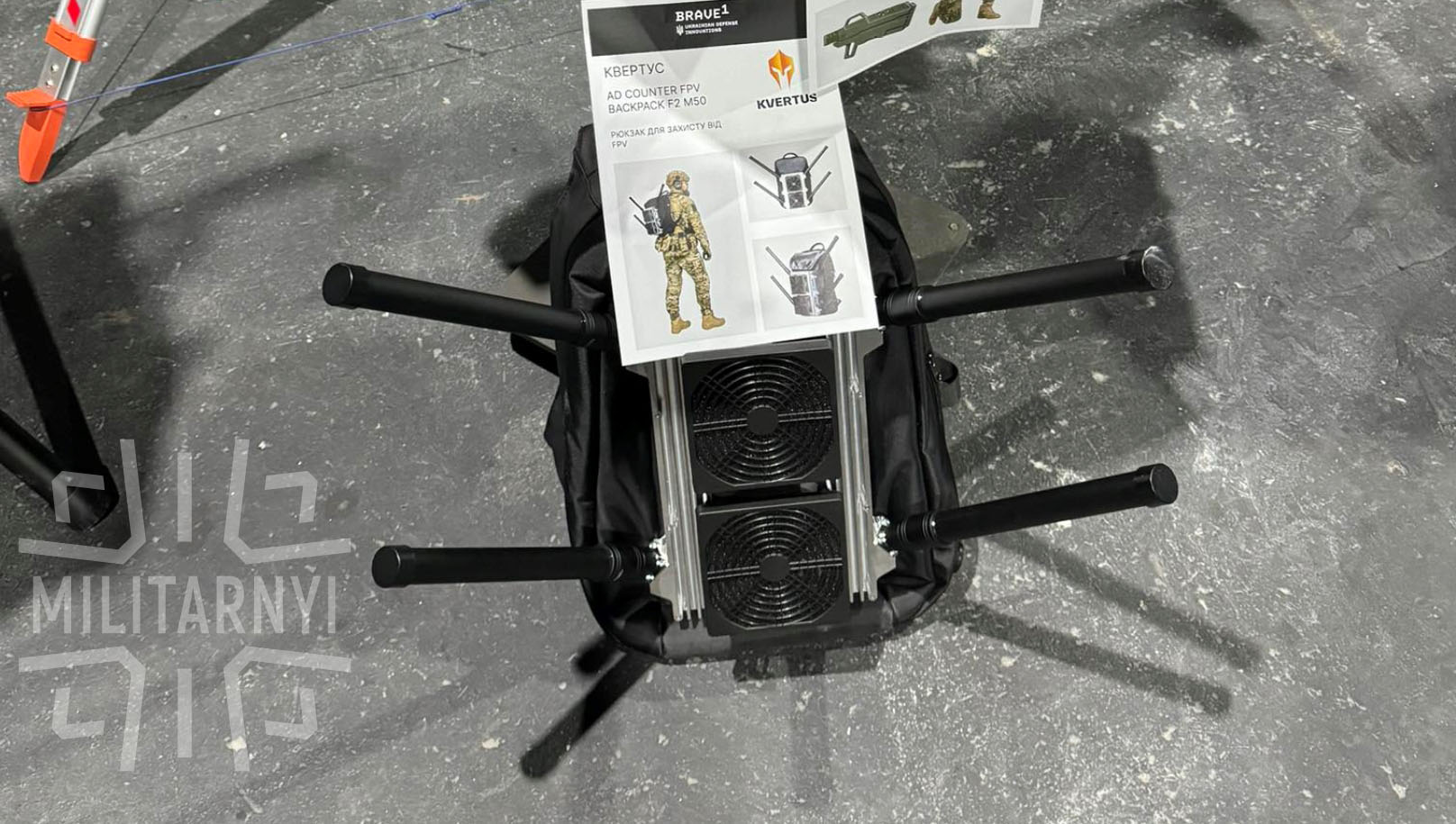
The AD COUNTER FPV BACKPACK F2 M50 is designed to cover small mobile units, demining operations, short offensive actions, or picking up wounded or fallen soldiers.
The company will have two types of anti-drone guns.
They are made under modern realities, in which one gun should target drones that drop munitions, and the second one should work on FPVs.
“It [a gun] will be the most powerful in the world in its class,” the developers assure.
The Kvertus already has an AD MW general-purpose gun that creates radio interference in six bands.
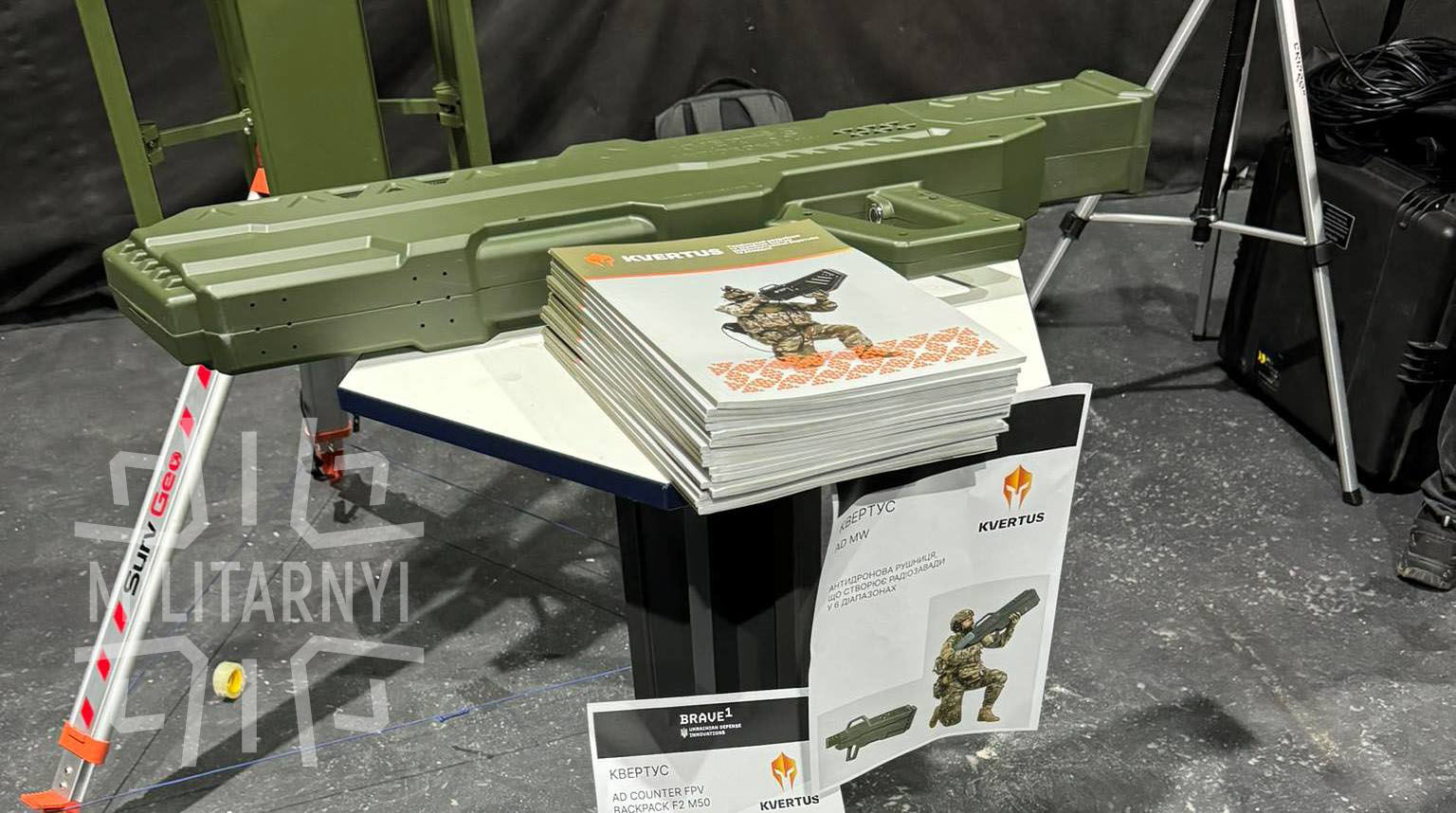
However, with the advancement of drone technology, remote antennas are also emerging, which amplify signals and prevent signal loss.
Therefore, new super-powerful means are needed to address evolving threats.
The company has developed, in particular, the MS AZIMUTH signal intelligence system, which helps to detect drones.
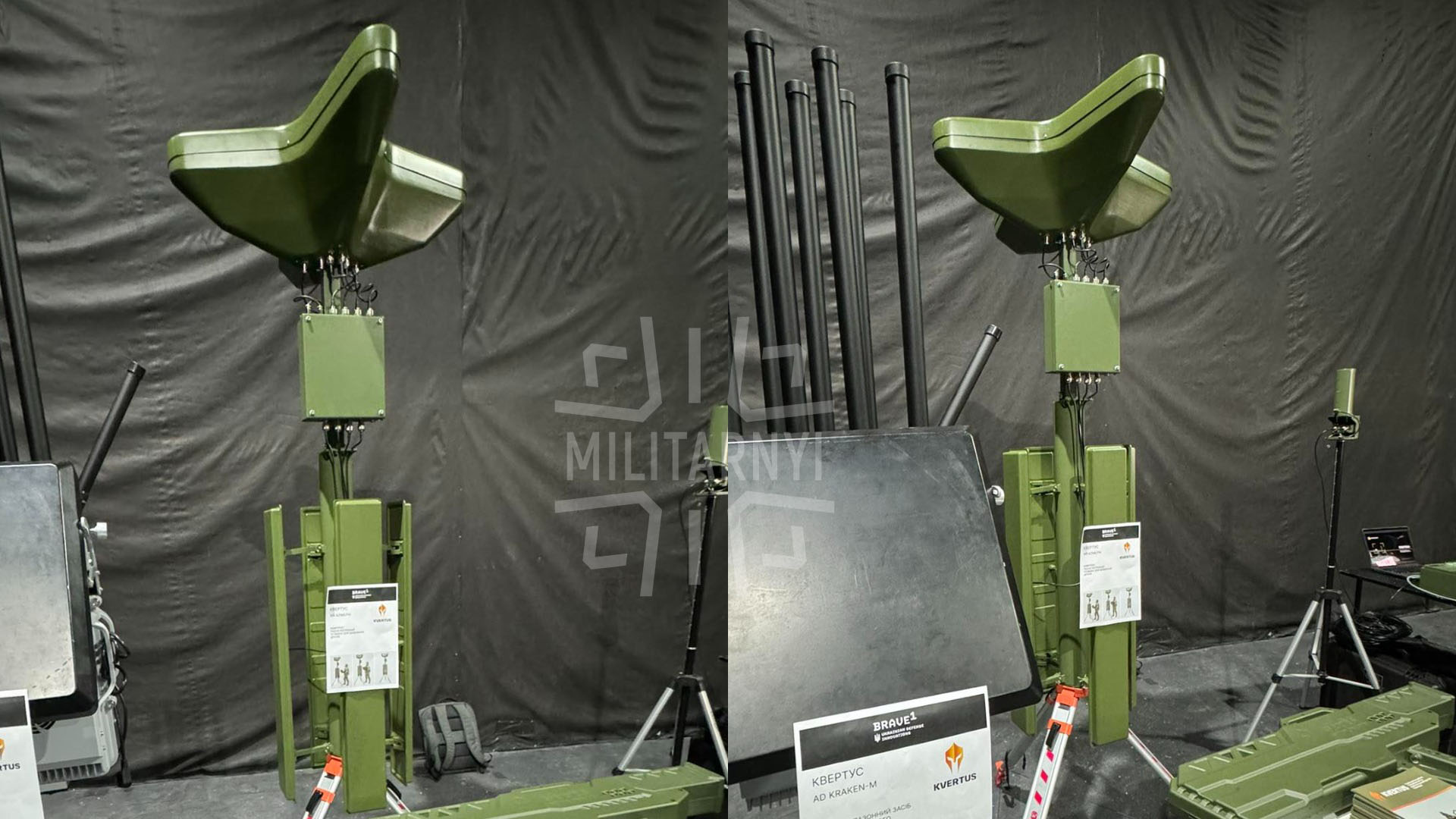
This station is designed for detecting and pinpointing unmanned vehicles by analyzing signals from their onboard systems, including control, telemetry, and data transmission channels. In addition, it can monitor the radio frequency spectrum, measure radio frequency radiation parameters, locate signal sources, and document the outcomes of its operations.
Obriy Miltech
The new Ukrainian defense company, Obry Miltech, recently introduced two of its main products.
These products are now being codified.
It developed the dome anti-FPV “Horizon ANTIFPV BASE” and “Horizon ANTIFPV AUTO” EW systems, which should affect enemy drones at short distances.
“Horizon ANTIFPV AUTO” is installed on military equipment that should protect the vehicle in motion. For this, the design has four magnets.

A “Horizon ANTIFPV BASE” has a tripod for installation in military positions to protect soldiers.
“The antenna that emits interferences is closed with a protective casing; generator of interferences with various chips is placed under the antenna,” the company explained.
EW was tested for suppression of ExpressLRS and Crossfire modules.
ExpressLRS and Crossfire are developing FPV drone control modules that provide high-performance radio communication with the operator.
ExpressLRS runs in the 2.4 GHz and 900 MHz bands, while Crossfire only runs at 900 MHz.
Crossfire operates on a closed architecture, prohibiting any modifications, whereas ExpressLRS offers an open platform, allowing for customization and refinement.
ExpressLRS, which is difficult to jam, is much more convenient for performing combat tasks, and more flexible in its settings.
“We are working against [such modules], jamming [them], but we can’t say that it’s 100% perfect. Currently, there isn’t a single system in Ukraine that can reliably jam ExpressLRS, especially with its remote antenna amplifying the signal,” the developers say.
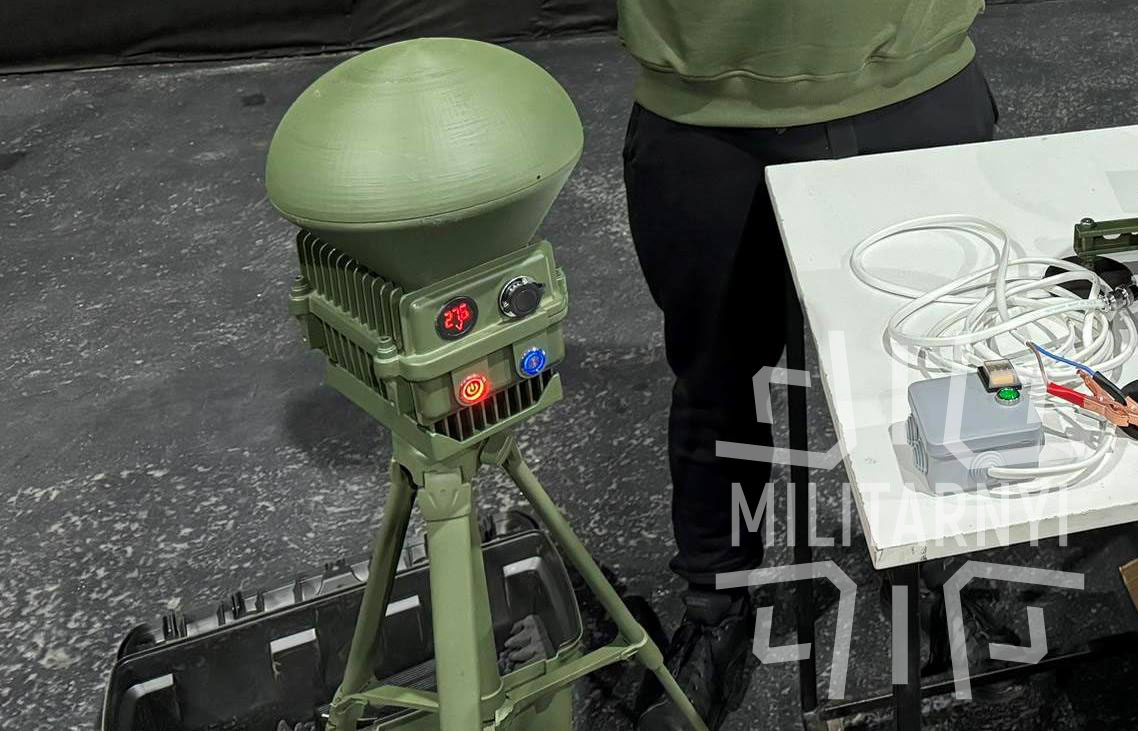
The company pointed out that EW could achieve up to 90% effectiveness against UAVs, but implementing such a system would be costly, potentially reducing the number of available EW systems at the front.
“It would be good to have EW, which has 70% efficiency against FPV drones, and it’s available at a cost suitable for most servicemen,” Obry Miltech representatives stated.
VPP INVEST
The electronic warfare system will also be manufactured by companies that initially began as developers of drones for military applications.
In 2023, VPP INVEST began hiring engineers to create its own EW, called SAFE-1.
Combat operations constantly change the requirements for EW and increase the number of frequencies required.
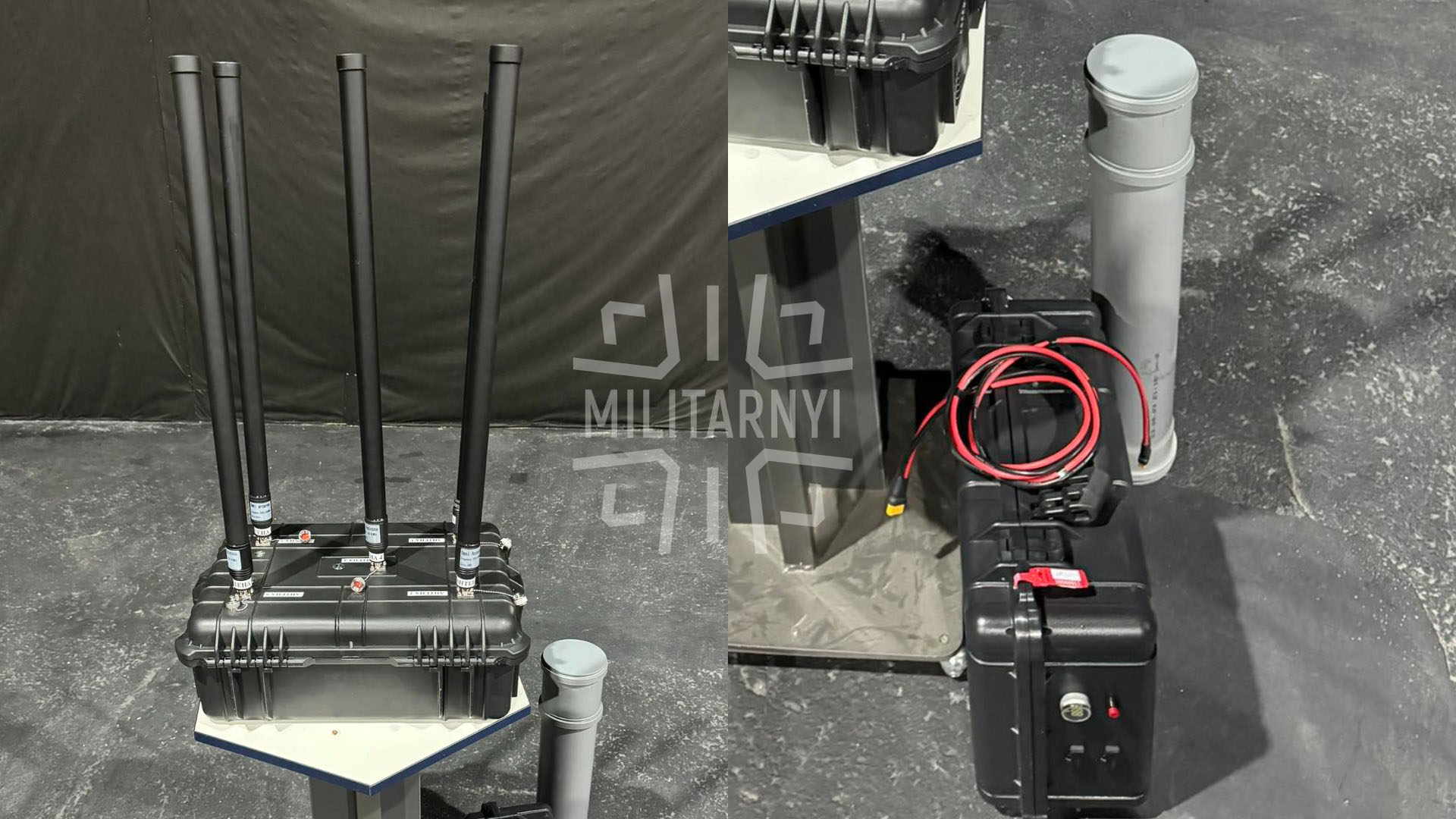
The company’s specialists decided to develop a universal EW system that can be installed either in trenches or on vehicles.
The improved version—”SAFE-5″—has five antennas. It can be charged from the on-board network, which allows it to operate for a long time, without being critically heated. The system also includes a battery pack.
“TOR” and “Hammer”
Various groups of independent Ukrainian engineers also are developing EWs and applying for Brave1 support.
Recently, one of these groups introduced the “Thor” and “Hammer” EWs.
They are attached to the back cover of the body armor.
In the kit, engineers have developed shielded protection against the effects of EW, which protects the soldiers from radiation.
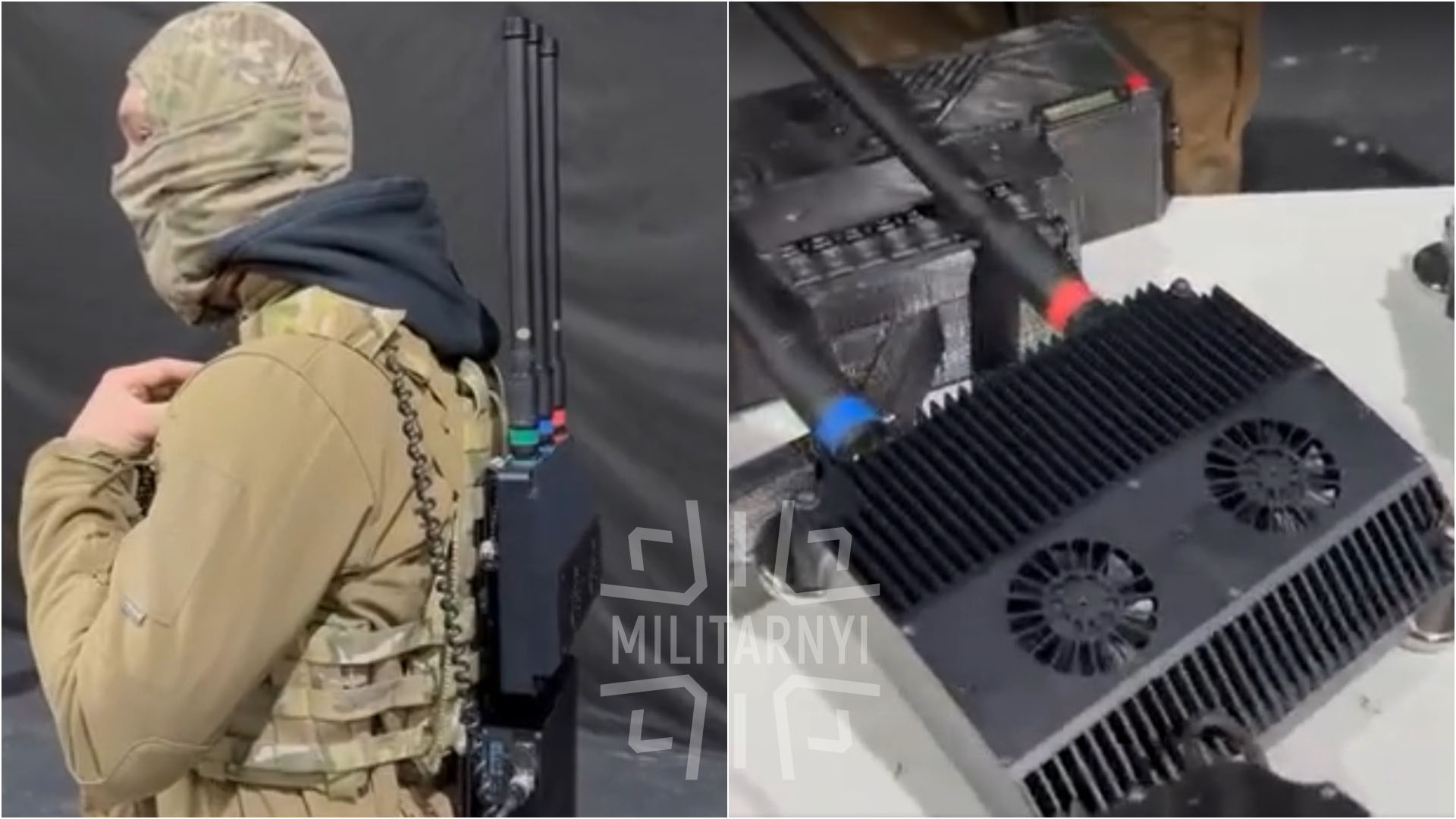
Engineers also developed a Morok EW system for the armored vehicle, which is already being tested in combat conditions. EW for vehicles received autonomous power.
“The system has performed very well in several military branches,” the engineers said.
- “Morok” EW system from the Ukrainian defense company. Photo credits: Militarnyi
- “Morok” EW system from the Ukrainian defense company. Photo credits: Militarnyi
Experts also created the prototype of an anti-drone gun, which received a fast-changing battery. The gun is specially designed at the request of the military.
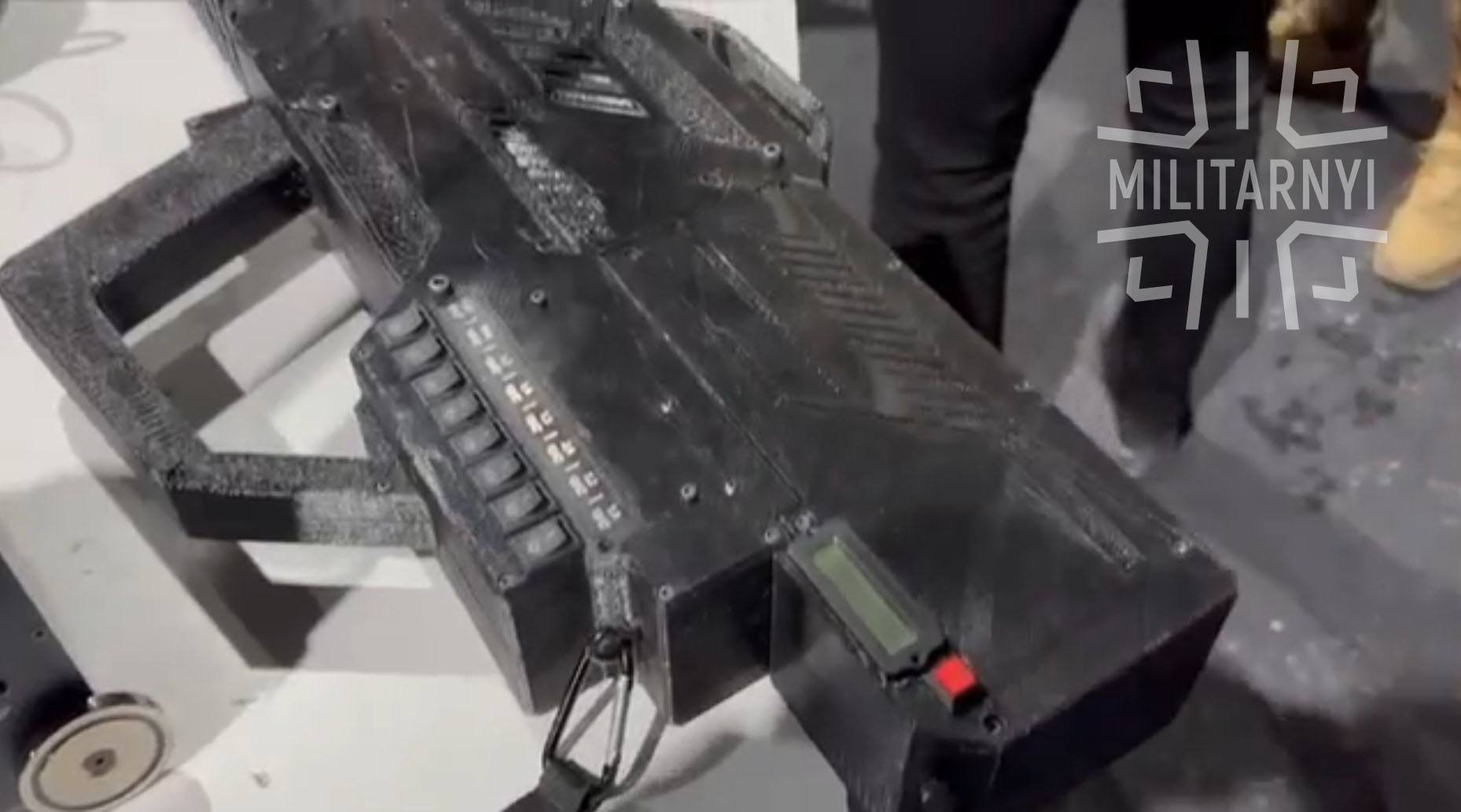
The gun has several operational frequencies, which can be selected by pressing a special button so as not to drain the battery, activating all frequencies at once.
ARMATRONIX
To meet the military needs, ARMATRONIX, has developed an electronic warfare system tailored to safeguard crossings.
However, technology does not stand still, and now the system is undergoing a modification that will protect the military in the trenches.
The Tornado-4 four-channel short-range EW system, after modification, will be able to counter FPV drones that have ExpressLRS modules.

Tornado-4 has a new signal generator and is already capable of closing four bands.
The system comes with power supplies that allow it to operate for up to 4 hours.
USEH
USEH has developed a breeder with an EW ST1 RF amplifier.
This system is specially designed for installation on a vehicle.
ST1 is created in a single case with passive cooling and with different types of antennas.
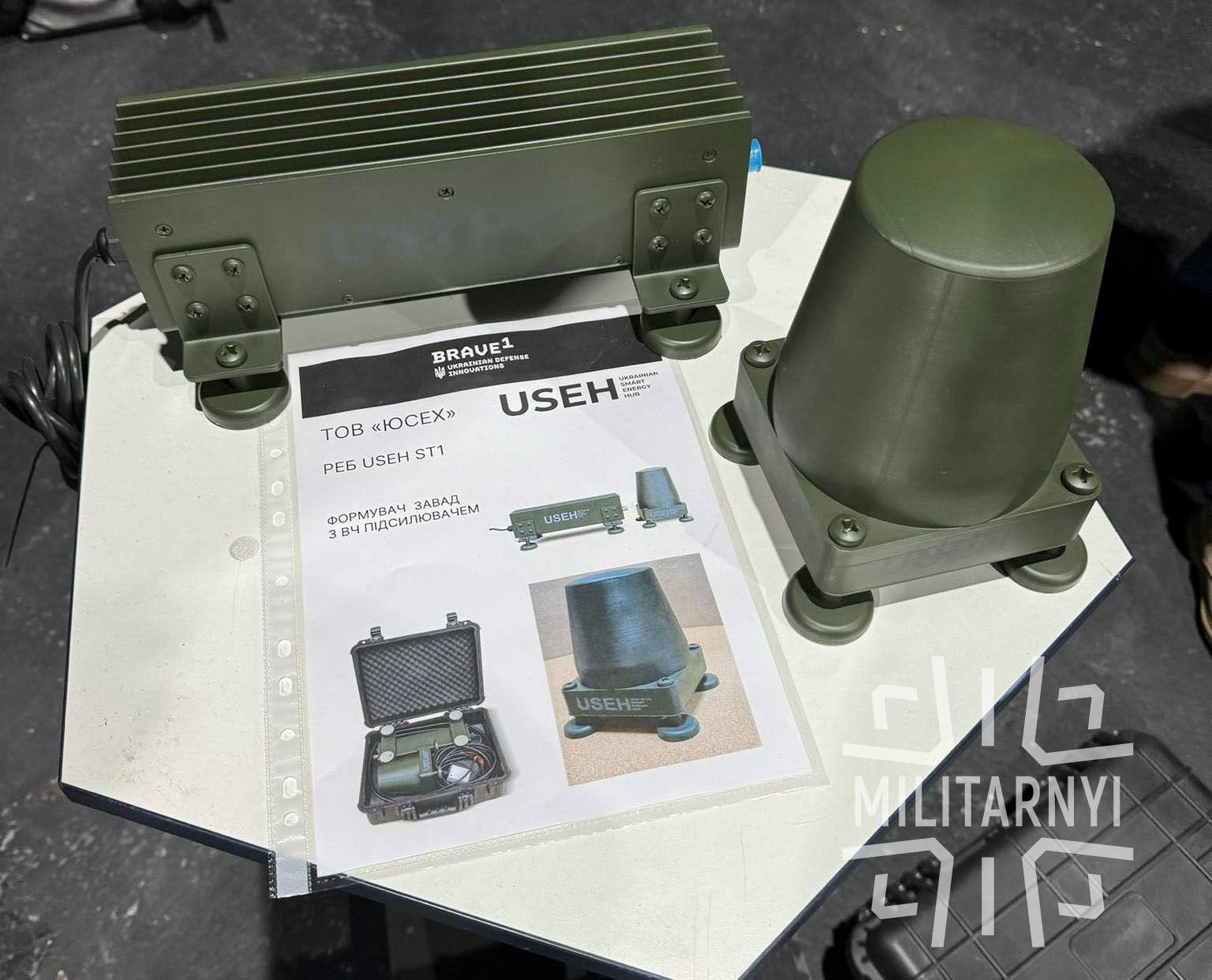
The complex is attached to the equipment with magnets and comes with power supplies.
“This serial product is already in use, it works well,” the company says.
The developers said that it costs in the range of UAH 50,000 to 70,000.
INFOZAHYST
To support EWs, the Ukrainian Infozahyst company, developed a system of detection and determination called “Pluto.”
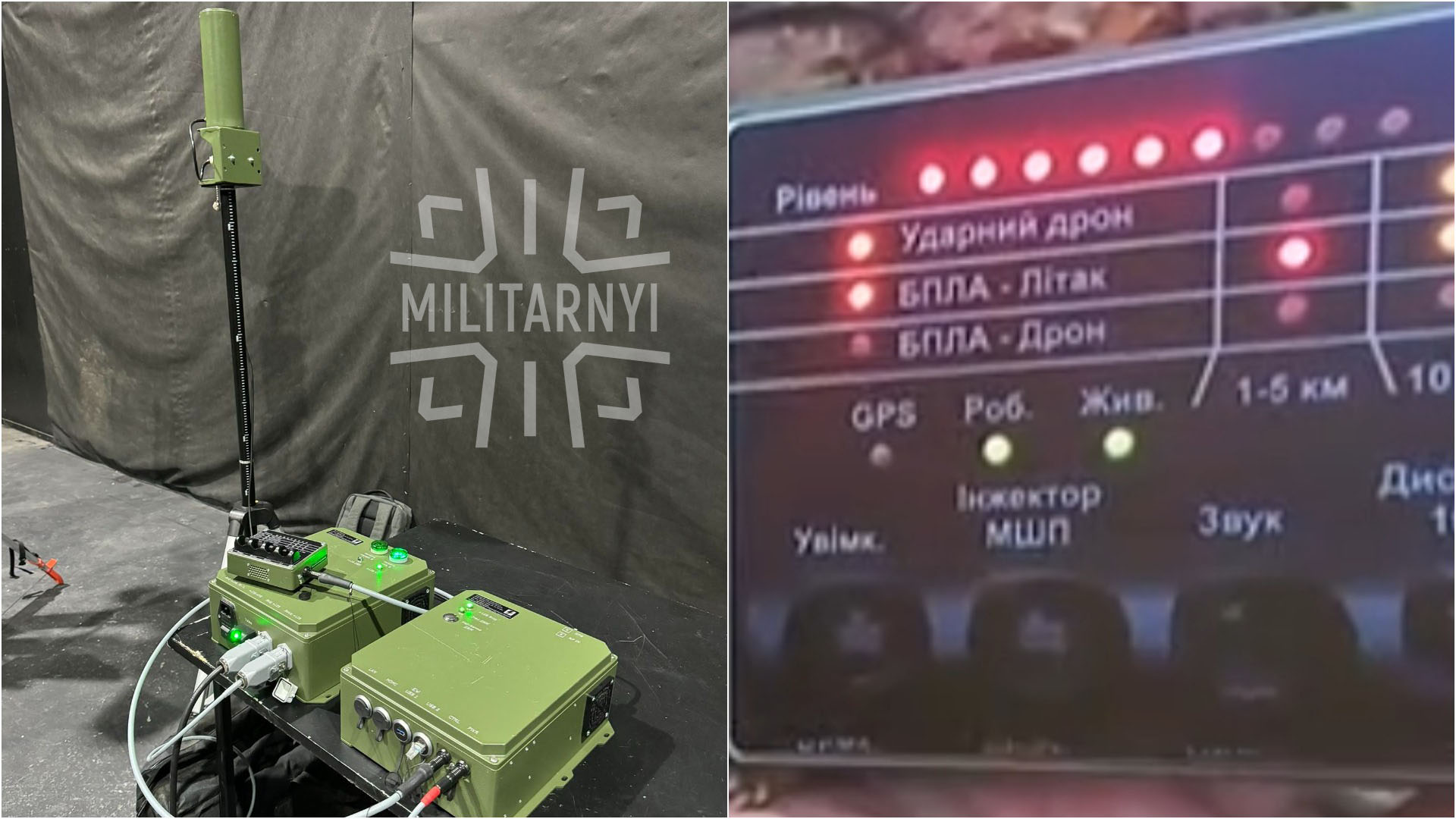
The developers said that this system is capable of determining modern Russian drones, including fix-wing reconnaissance types.
It is able to work, in particular, with a Hydra-R compact dome system, which was also developed by the company.

The Hydra-R was created primarily to suppress FPV drones.
Market development
The development of EW systems requires high research dynamics. In Ukraine, they strive to create the most decentralized approach.
Over time, a specific market should appear that will contribute to the development of complexes and their reduction in price.
“The market must develop, and the customer must determine what he needs,” the Brave1 representatives are assured.
SUPPORT MILITARNYI
Even a single donation or a $1 subscription will help us contnue working and developing. Fund independent military media and have access to credible information.


 Центр ініціатив ПЖ
Центр ініціатив ПЖ 
 Vadim Kushnikov
Vadim Kushnikov 
 Андрій Тарасенко
Андрій Тарасенко 
 Юрій Юзич
Юрій Юзич 
 Віктор Шолудько
Віктор Шолудько 
 Роман Приходько
Роман Приходько 

 Андрій Харук
Андрій Харук 


 Yann
Yann 
 СПЖ "Водограй"
СПЖ "Водограй" 
